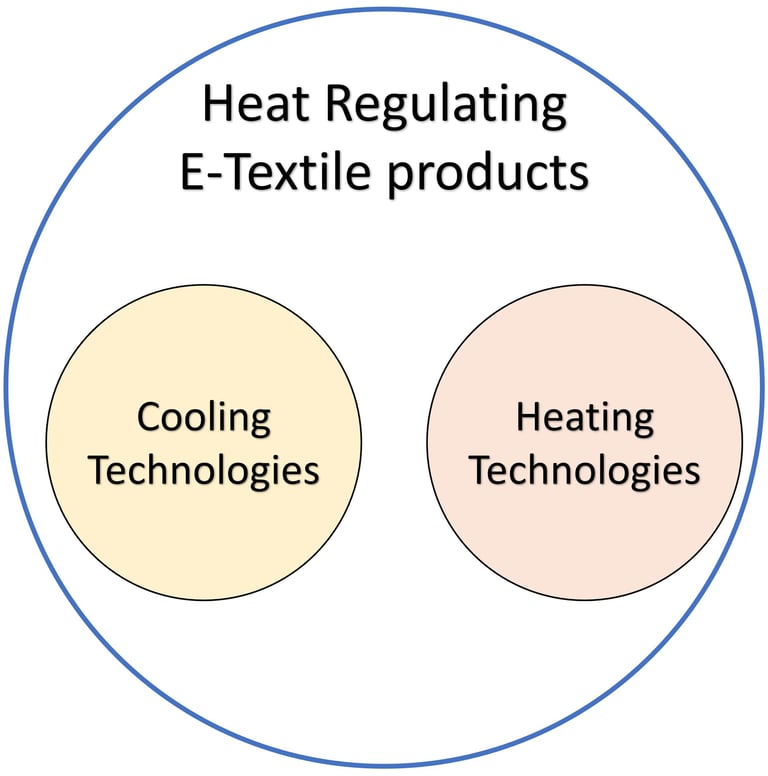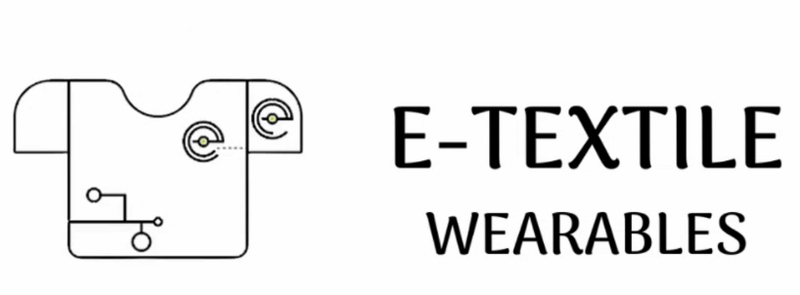Heating Garments
Heated Electronic textiles or heating garments are one of the main categories of E-textiles that are widely used in many applications.
12/7/20255 min read


Heating Garments and Heated Electronic Textiles (E-Textiles)
Heating Garments or Heated E-textile products
Electronic textiles, also known as e-textiles, are fabrics that incorporate electronic components and technologies. Heated Electronic textiles or heating garments are one of the main categories of E-textiles that are widely used in many applications. These products are used to aid body temperature regulation in extreme conditions.
If these products utilize electronic components in order to regulate body temperature then we call them Heated Electronic Textile products.
But if they use any other technology to regulate body temperature then they are called Smart Textiles.
What are heat-regulating Electronic Textile products?


Heat Regulating Electronic Textiles (E-Textiles) can be either cooling or heating technologies
Heat-regulating electronic textile products are clothing items that use electronic components to manage the temperature of the wearer. These products are designed to keep the wearer cool in hot environments and warm in cold environments. They work by using electronic components such as thermoelectric generators, thermistors, and heating elements to monitor and adjust the temperature of a garment or an E-textile fabric.
What are heating garments?
Heating E-textiles or heating garments are a subcategory of Heat regulating E-textiles. When we say heat regulating E-textiles, we mean a broader category of products that can provide cooling and heating sensations based on the user’s preferences.
However, when it comes to heating E-textile products, it only has the capability of providing enhanced heating to aid in body temperature regulation. In other words, it is incapable of cooling the body.
How do heating garments work?
There are a variety of different technologies used in heat-regulating heating garments or E-textiles. Most of those products use thermistors to detect changes in body and environment temperature and adjust heating elements accordingly in order to improve the comfort of the wearer. Most of these E-textile products use heating elements that are powered by electricity. Hence the heating power and the time of heating can be controlled via an electronic control system.
Different Heating technologies used in heating garments

Conductive threads used for heating garments
Carbon Fiber Heating Elements
Carbon fiber heating elements are a popular choice for e-textile products or heating garments. As these fibers can be used to make conductive threads, the heating panels made using these threads or yarn are flexible, lightweight, and have a low profile.
Carbon fibers have high thermal conductivity and can heat up quickly, making them ideal for heating clothing items such as gloves, jackets, and socks. The heating element is made by coating a conductive polymer on the carbon fiber, which then generates heat when a current passes through it.
Metal Wire Heating Elements
Metal wire heating elements are also commonly used in e-textile products. These elements are made by winding a wire, such as copper or nickel-chromium alloy, into a coil or mesh shape. Metal wire heating elements are durable, long-lasting, and can generate high levels of heat.
However, they are not as flexible as carbon fiber heating elements and can be bulky and uncomfortable to wear. Hence, the profile and other properties of the metal wires must be carefully controlled in order to achieve a higher level of comfort through heating garments.
Printed Heating Elements
Printed heating elements are a relatively new technology that involves printing conductive ink onto a substrate or directly onto a fabric surface. This process creates a flexible, lightweight heating element that can be easily integrated into e-textile products. Printed heating elements are customizable and can be designed to heat specific areas of a garment, such as the back or chest. They are also more energy-efficient than other heating elements, making them an eco-friendly option.
However, Some companies have faced a hard time when using printed heating elements due to resistance changes in the panel with stretch and bend cycles.
Polymer-Based Heating Elements
Polymer-based heating elements are made by embedding conductive polymer fibers into a fabric substrate. This type of heating element is thin, flexible, and lightweight, making it suitable for use in e-textile products. However, they can take longer to heat up and may not generate as much heat as other types of heating elements. Furthermore, these heating elements may have other issues such as uneven heating across the panels, durability, and complications when the fibers come into contact with other substances such as water or sweat.
The heating elements in the garment can be strategically placed in areas where heat is most needed or most heat sensitive, such as the hands, feet, or core of the body. This allows the wearer to regulate their body temperature more effectively, reducing the risk of overheating or hypothermia.
Applications of heating electronic textile products
Heating E-textiles have a wide range of applications in a variety of industries due to their superior comfort in cold environments when compared to their traditional counterparts. Below are a few examples of Heating E-textile products.
Industrial Applications of heated E-textiles
Heating electronic textiles are commonly used in industrial applications in apparel form factors or as heating garments such as jackets, vests, gloves, and socks. These products provide warmth and comfort to users during cold weather, allowing them to work outdoors for extended periods without discomfort.
Medical Applications of heated E-textiles
Heating electronic textiles are also used in medical applications to help manage symptoms of conditions such as arthritis and Raynaud’s disease. The textiles are incorporated into garments that can be worn to provide localized heating to specific areas of the body, helping to improve blood circulation and reduce pain.
Automotive Applications of heated E-textiles
Heating electronic textiles are increasingly being used in the automotive industry. They are integrated into car seats and steering wheels to provide warmth and comfort to drivers and passengers during cold weather.
Outdoor Recreation Applications of heated E-textiles
Heating electronic textiles are also used in outdoor recreation activities such as skiing and snowboarding. Apparel such as heated jackets, gloves, and socks provide warmth and comfort to users during cold weather conditions, allowing them to enjoy their activities for longer periods.
Military Applications of heated E-textiles
Heating electronic textiles are also used in military applications. Soldiers in cold weather environments can benefit from heated clothing, which can help them maintain body temperature and prevent hypothermia.
Using Data Science and Machine Learning in Heated E-textile products
To optimize the performance of heating electronic textiles, data science, and machine learning algorithms are used to collect and analyze data from the user, such as their body temperature, external temperature, and user behavior patterns.
The algorithms use the data to determine the optimal temperature and heating duration needed for maximum comfort.
The algorithms can also learn the user’s preferences and adjust the temperature and heating duration accordingly to provide a personalized heating experience.

The integration of data science and machine learning in heating electronic textiles has made them more efficient, durable, and practical for users. The algorithms can detect when the user is no longer in contact with the textile, preventing energy wastage. They can also adjust the heating temperature and duration based on environmental conditions, such as wind speed and humidity, to maintain optimal heating levels.
Clim8 is a company who's using advanced machine-learning techniques in heating garments
Contact
Let’s talk about your next wearable project
© 2025. All rights reserved.
